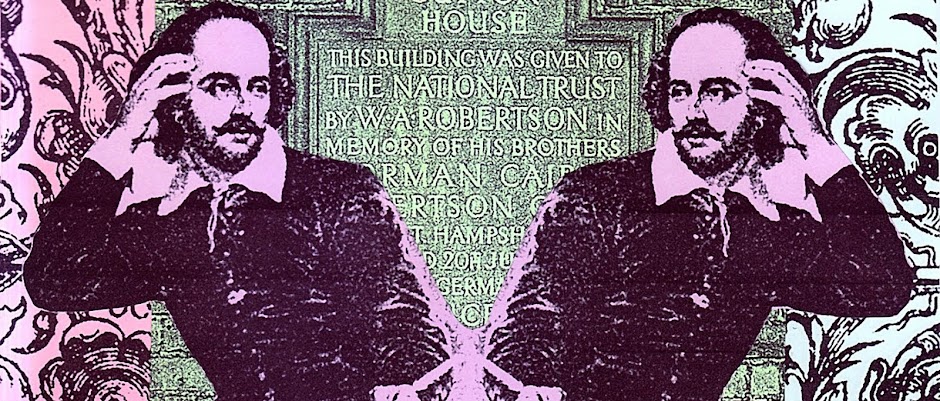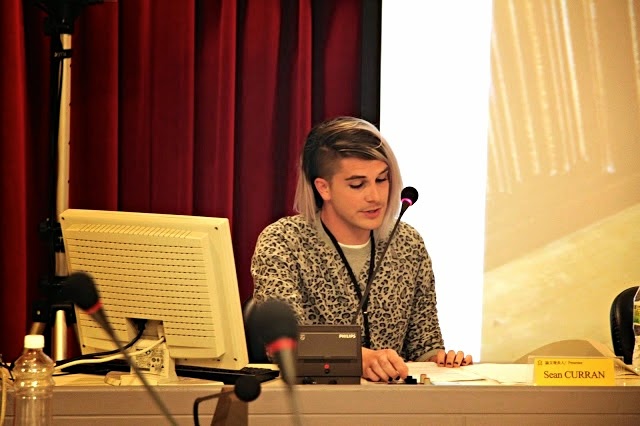My Taipei trip feels like an age ago, I've been quite slow in blogging about it, it was such a brilliant (albeit exhausting experience), apologies for my tardiness.
I attended the 'Museums and Education in the 21st century: local and global discourses' conference at the National Taiwan Normal University in June with fellow PhD student (and artist for my Master Mistress exhibition) Judith Brocklehurst, and three academics from my department.
I won't recount the conference proceedings, but the two days were varied and rich and truly international, there were papers from Taiwan, the UK, Australia, China and more. We met some really interesting people and made some really great connections for the future.
I wanted instead to share some of the pictures I took while I was there, Judith and I stayed for a few days following the conference, and visited several heritage sites which helped to contextualise some of the issues that we had been discussing and hearing about throughout the conference.
The first site we visited was the National Palace Museum in Shilin, which holds one of the largest collections of ancient Chinese artefacts in the world. The conference organisers kindly arranged for us to have a tour from an extremely knowledgable voluntary tour guide, though due to the size of the museum we only scratched the surface in the few hours we were there (also we were treated to a delicious meal in the roof top restaurant!)
We then went to the Shihsanhang Museum of Archaeology, which, aside from being one of the most interesting museum buildings I've ever seen, seemed quite incoherent in terms of the odd dialogue happening between the jarring architecture and the rather archaic nature of the exhibits within it, including rather dated dioramas and model human architects aplenty.
The next day we visited the Lin Family Mansions and Gardens. I was really keen to see what historic houses in Taiwan looked like, and how they were as a visitor experience in comparison to UK historic houses. Unfortunately the tours were only conducted in Mandarin, and Judith and I felt our language skills weren't up to enough to join them, so we mainly spent time in the gardens. The rain was torrential, but this is one of the most beautiful places I've ever been to. It is one of the most complete surviving examples of traditional Chinese garden architecture and was structured around a series of ponds.


It was beautifully crafted to accommodate the wet weather, as it was almost entirely under cover, you could walk almost all the way around it without getting wet. It was also great so see groups of teenagers using the space to just hang out, I can't imagine a group of teens here, spending their free times just chatting in a national trust garden (partially because they aren't free!). A really interesting thing was the interpretation sign at the front which was in Mandarin and English, the English one gave a brief overview of the entire history of the house (it was occupied by squatters at one point, a surprising parallel with Sutton House!), with the only unaccounted period being the 50 years (until 1945) that Taiwan was under Japanese rule, a really interesting omission in a country that seems to wear the Japanese legacy of architecture, food and subcultures quite proudly. The gardens had been built around, so closely that there were rather run down high rises with mesh screens in front of them looking over the gardens. A really striking juxtaposition.


As an aside, we visited the gay area of Ximen, which was one of the only places that we encountered where there seemed to be any sort of bar culture that resembles our own, the stairway leading to a walkway around the top of the bars had its walls painted in rainbow striped and had a small photographic exhibition called Rainbow People.
There was a theatre next to the gay bars called the Red House Theatre, most of which operated as an artists market, and there was a small exhibition about the history of the building and the area, including a small exhibit of material relating to queer culture. I gather Taipei is quite Westernised in terms of its approach to visibility of queerness, which was lovely to see.
Our next trip was to Tamsui, which was at the end of one of the MRT lines (the metro system). It was one of my favourite days, even though we were still in Taipei, because it was at the mouth of a river and felt quite seasidey, the climate was completely different, the skies were blue, and the humidity was slightly more bearable because of the sea breeze.
We visited Tamsui Historical Museum, a former British Consular residence, which felt very much like an English country house (apart from the humidity), and oddly enough they had an exhibition there called 'Everlasting vision of William Morris', including various Morris pieces of furniture, the focus was on the preservation of historic buildings, and the origins of SPAB (Society for the Protection of Ancient Buildings). It was very unusual to see an exhibition in a historic house that was about the process of protecting historic houses, a really refreshing approach.
Next day we went to the Taipei Fine Art Museum, which had a very Tate Modern feel about it, but more coherent, and MUCH cheaper. We went to three exhibitions, but my favourite was a retrospective of the work of
Dean-E Mei, who I was unfamiliar with before. Due to the time he lived, studied and practiced in New York, Dean-E Mei has a really interesting perspective on Taiwan, and his own national identity.
Right by the Fine Art Museum was the Taipei Story House, which was a really weird faux Tudor building built in the early 1900s. The house was used in a really interesting way, as apart from the first room, which gave a brief history of the building, the rest of the house was devoted to temporary exhibitions, telling a single story, in this case, it was the history of fortune telling. There were walls filled with Tarot cards, and various ways for the visitor to learn various elements of fortune telling, a woman helped us to tell our fortunes using numerology, by drawing out three numbers from a little velvet bag, my fortune was something along the lines of 'pretty face' and Judith's elicited shrieks of horror and fear from the woman, who had to ask someone else to try and translate it sensitively...


Then we headed to the Lin An Tai Historical House and Museum, which was odd as it claimed to be the oldest historic house in Taipei, but had been deconstructed and relocated in order to make room for a new road. We only had half an hour or so to see the house as it was about to close, but it was great to see the interior of a traditional Chinese house as we hadn't seen the inside of the Lin Family Mansion.
On our final full day, we visited the Chiang Kai-Shek Memorial Hall, and were just in time for the changing of the guards, which was a gloriously camp choreographed affair, because the building was so open, there was no air condition, it was so insanely hot in there as we were watching the guards change I could feel sweat running down my legs, the guards must have been suffocating. There was a very nice moment where a security man mopped the sweat from their brows and the back of their necks, a weirdly tender moment between men with massive guns.
It was such a great trip, an honour to be able to talk about my Sutton House exhibition to an international audience and meet so many people doing really great work in museums around the globe. It was also a brilliant opportunity to see so many amazing sights (and sites) in a country that otherwise hadn't really been on my radar of places to visit.
I also made a little video of some of the moments I captured while I was there, including the changing of the guards at the Chiang Kai-Shek Memorial Hall, and the torrential rain at the Lin Family Mansion and Gardens:
Taipei from
Sean Curran on
Vimeo.













































